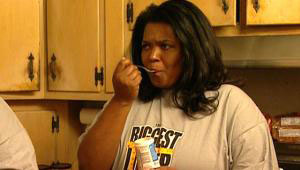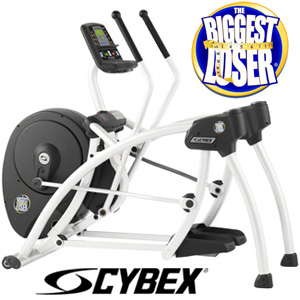Nielsen just announced that Biggest Loser has the second most product placements in primetime, second only to American Idol. It’s not likely to surprise the millions of loyal fans who watch NBC’s hit reality show, as it’s often bantered about amongst viewers.
 Every Tuesday night the sarcasm on Twitter is thick. A scene will open, for instance, at the Biggest Loser Ranch with trainer Dolvett in the kitchen with a couple of contestants. As he starts to talk about the merits of keeping healthy snacks on hand to avoid temptations or keep energy high, the Tweets start rolling in with messages like “oh here it comes” and “what are they selling now?” And then, as expected as confetti at the finale, several flavors of Yoplait yogurt will appear on the counter. Spoons dip in, “yums!” are exchanged, and everyone skips out to the gym for a well-fueled workout.
Every Tuesday night the sarcasm on Twitter is thick. A scene will open, for instance, at the Biggest Loser Ranch with trainer Dolvett in the kitchen with a couple of contestants. As he starts to talk about the merits of keeping healthy snacks on hand to avoid temptations or keep energy high, the Tweets start rolling in with messages like “oh here it comes” and “what are they selling now?” And then, as expected as confetti at the finale, several flavors of Yoplait yogurt will appear on the counter. Spoons dip in, “yums!” are exchanged, and everyone skips out to the gym for a well-fueled workout.
It’s a scene that loyal Biggest Loser fans know well, and one that plays out at least once in every episode, going on 13 seasons. Most of them laugh it off, knowing that it’s just part of the deal. Some are offended and annoyed, but you probably couldn’t call them loyalists.
All of these product placements, or as those involved with the show call them “product integrations,” are what pay the bills. “Brand integrations, in general, help make TV more affordable to the networks,” David Norton, president of Ladder Up Media, told us today in an interview. “They keep your favorite shows on TV, including Biggest Loser.” He says the money the programs earn from such product placements allow them to do a lot more with the show because they don’t have to hassle with budget constraints.
Nielsen noted 533 occurrences of product placement during Biggest Loser in 2025. They only slightly missed the top spot, which Norton noted they’ve held before, by less than 50 placements. They were beat by American Idol with 577 product placements. Norton suggests there’s more value in those that appear on Biggest Loser though. “We’re not shoe-horned in like on American Idol. Our placements fit in naturally.”
Norton spent ten seasons developing the brand integrations for Biggest Loser. He’s the guy behind all of those sometimes-awkward moments with Ziploc, Brita, Yoplait, and many others. He’s also one of the responsible parties for the quickly-growing and wildly popular Biggest Loser Resort, which has two locations in Utah and Malibu.
“Biggest Loser is a lifestyle brand and over the years there’s been an evolution in what it means to be part of the Biggest Loser Family. We’re very selective,” Norton told us. He explained that they have some legacy partners who wouldn’t necessarily still be chosen today. Premium brands like Brita, Cybex, Subway, Jennie-O Turkey, Walgreen’s, Progresso, Ford, and even some of their own brands like Biggest Loser Club and Simply Sensible Meals, are some that you may have seen just in this recently wrapped season. They get prime placement in a natural setting in front of an audience hungry for more ways to better themselves. These placements are an advertising boon, and give them the brands a top-five placement, similar to what Coca-Cola receives.
“Biggest Loser provides an amazing opportunity for brands to gain huge amounts of exposure,” Norton said. “The show naturally lends itself to product integration. It doesn’t make sense not to see Cybex. If we get rid of it, the show seems empty of reality.”
With its 13th season premiering in January, the Biggest Loser is one of the most successful reality TV programs. While people may balk at the use of a Brita filtered water bottle in the gym, or storing fresh-cut vegetables in a Ziploc bag for easy meal preparation later, it’s those very in-show advertisements that keep Alison, Bob, Dolvett, and 20-or-so fresh faces coming back to the scale season after season.
